mobile View, to the German Version tap the flag


- Kingdom of Sardinia-Piedmont (also: Kingdom of Sardinia)
- 1720–1861
- former state on the Italian peninsula
- own name: Regno di Sardegna-Piemonte, also: Regno di Sardegna
• Flags
• Meaning/Origin of the Flag
• Map of the historical states in Italy
• Numbers and Facts
• History
• Origin of the Country's Name
• Map of the today's regions of Italy
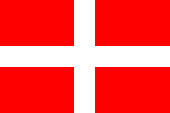
1720–1802,
Flag of Sardinia-Piedmont,
Source, by: Wikipedia (EN)



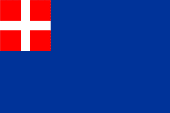
1720–1802,
Naval flag of Sardinia-Piedmont,
Source, by: Wikipedia (EN)



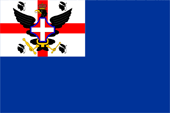
1802–1814,
Naval flag of Sardinia-Piedmont,
Source, by: Flags of the World



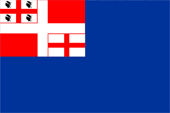
1814–1816,
Naval flag of Sardinia-Piedmont,
Source, by: Flags of the World



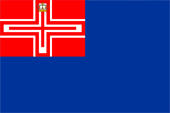
1816-1848,
State flag of Sardinia-Piedmont,
Source, by: Wikipedia (EN)



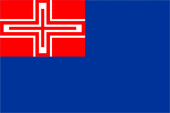
1816-1848,
Naval flag of Sardinia-Piedmont,
Source, by: Wikipedia (EN)



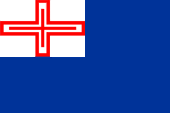
1816-1848,
Merchant flag of Sardinia-Piedmont



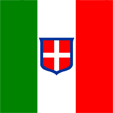
1848-1851,
State flag of Sardinia-Piedmont,
Source, by: Wikipedia (EN)



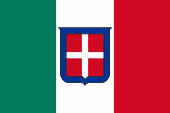
1851-1861,
National and merchant flag of Sardinia-Piedmont,
Source, by: Wikipedia (EN)



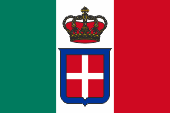
1851-1861,
State and Naval flag of Sardinia-Piedmont,
Source, by: Wikipedia (EN)




After the unification of Savoy-Piedmont with the Kingdom of Sardinia in 1720, the flag of Savoy-Piedmont was maintained initially. It showed a white cross on a red background, the heraldry of the House of Savoy. After Napoléon had occupied and annexed Savoy-Piedmont, the by the House of Savoy ruled territory was confined to the island of Sardinia. The white bars cross appeared on the flags from 1802 only on a breastplate of an eagle, which was placed on a upper corner, which showed the heraldry of the Kingdom of Sardinia, a red bars cross on white, and in the white fields appeared four Heads of Moors. Between 1814 and 1816 appeared a flag again, which tried to combine the heraldry of the House of Savoy with the heraldry of the Kingdom of Sardinia. From 1816 - the territory of the state was meanwhile restored - new flags appeared, on which the combination of the heraldry of the House of Savoy, with those of the Kingdom of Sardinia, was well done. Red and white crosses were placed in and on each other. From 1848 to 1849 raged in almost all of Italy the uprising of the people's movement "Giòvane Itàlia" under Mazzini and Garibaldi, the monarchies were often shortly disempowered, Charles Albert of Sardinia-Piedmont sets himself at the top of the uprising, but the Italian uprising ends in disagreement. In this phase of rebellion in the Italian States were often used national-italian flags in green, white and red. Already in the March 1848 Sardinia-Piedmont had adopted a green-white-red flag, to highlight the Italian character of its citizenry, and for popularizing to the national idea. To distinguish the flag from others, the coat of arms of the House of Savoy was placed in the middle. This flag was maintained until the coronation of Victor Emmanuel II. of Sardinia-Piedmont to the King of the Kingdom of Italy and then it was taken over as national and merchant resp. state and naval flag for Italy.
Source: World Statesmen,
Flags of the World,
Wikipedia (EN)

all state-denominations in English:
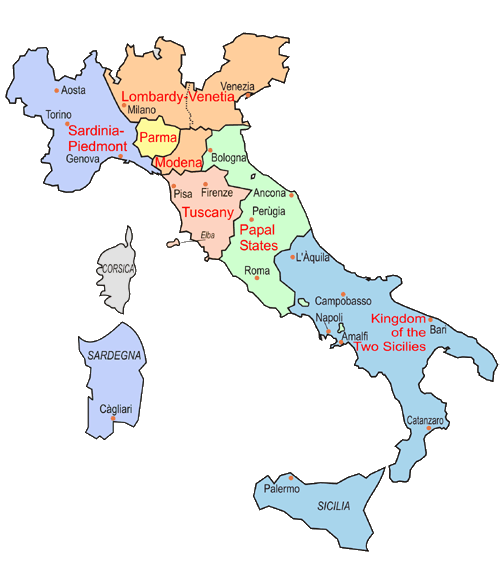
Source: Volker Preuß

Area: 29.344 sq. mi. (1857)
Inhabitants: 5.167.000 (1857)
Density of Population: 176 inh./sq.mi.
Capital: Turin (ital.: Torino)
Sprachen: Italian, Piedmontese, Sardinian, Arpitan
Source: Wikipedia (D),
Meyers Konversationslexikon

1701–1713 · Spanish War of Succession
1714 · Peace Treaty of Utrecht, the House of Savoy
acquires the Kingdom of Sicily
1718 · in exchange for the Kingdom of Sardinia, Sicily comes to the House of Savoy
1720 · unification of Savoy-Piedmont with the Kingdom of Sardinia, the title of King of Sardinia comes in this way to the Duke of Savoy, establish of the Kingdom of Sardinia-Piedmont by the House of Savoy
1796 · after the conquest by French troops in Piedmont gets proclaimed the Republic of Alba (at Napolèons grace)
1798 · proclamation of the Piedmontese Republic (at Napolèons grace)
1800 · rename of the Piedmontese Republic in Subalpine Republic (at Napolèons grace)
1802 · direct annexation of the whole Piedmont by France, the state of Sardinia-Piedmont exists further as a rump state on the island of Sardinia
1814/15 · Congress of Vienna, reorganization of Europe after the Napoleonic era, restoration of the Kingdom of Sardinia-Piedmont, the Republic of Genoa gets annexed by Sardinia-Piedmont
1821 · revolutionar riots, Austria intervenes
1847 · anti Austrian riotings
1848 · in almost all of Italy uprising of the people's movement "Giovine Italia" under Mazzini and Garibaldi, Charles Albert of Sardinia-Piedmont sets himself at the top of the uprising, the Italian uprising ends in disagreement
1859 · Italian War of Independence against Austria, the Lombardy gets annexed by Sardinia-Piedmont
1860 · Guastalla, Parma, Modena, Tuscany, Umbria, Marches and the Romagna become annexed by Sardinia-Piedmont, Savoy and Nice were to cede to France, Savoy gets divided into the départements of Haute-Savoie and Savoie
17th of March 1861 · coronation of Victor Emmanuel II. of Sardinia-Piedmont to the King of the Kingdom of Italy
1946 · establish of the Piedmont region as an administration unit
1948 · establish of the Sardinia region as an administrative unit
Source: Wikipedia (D),
Atlas zur Geschichte,
World Statesmen

The name "Sardinia-Piedmont" is not entirely uncontroversial. It explains the combination of the country by the two parts Sardinia and Piedmont. The kingdom, however, was simply and frequently called "Kingdom of Sardinia". The name "Sardinia" goes back to the Sardinians, a mixed people, whose descendants still live on the island. The Sardinians arised by mixing of the original Ligurian population with Greeks, Romans, Arabs and Spaniards. The name "Piedmont" means "foot of the mountain," and describes the geographical location of the country. The Italian name is "Piemonte", the French "Piedmont".
Source: Handbuch der geographischen Namen,
Volker Preuß

all denominations in Italian
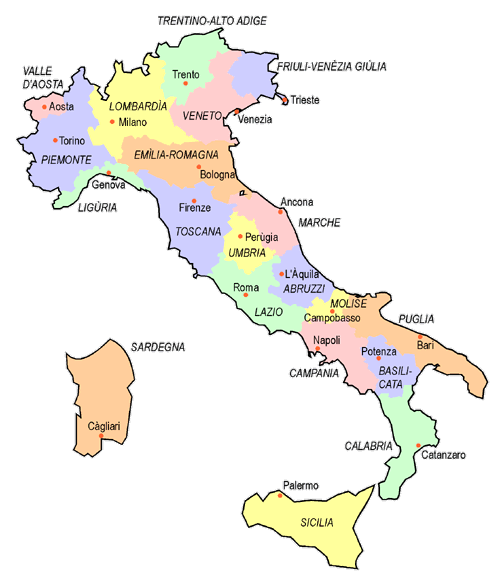
Source: Volker Preuß


![]()

































